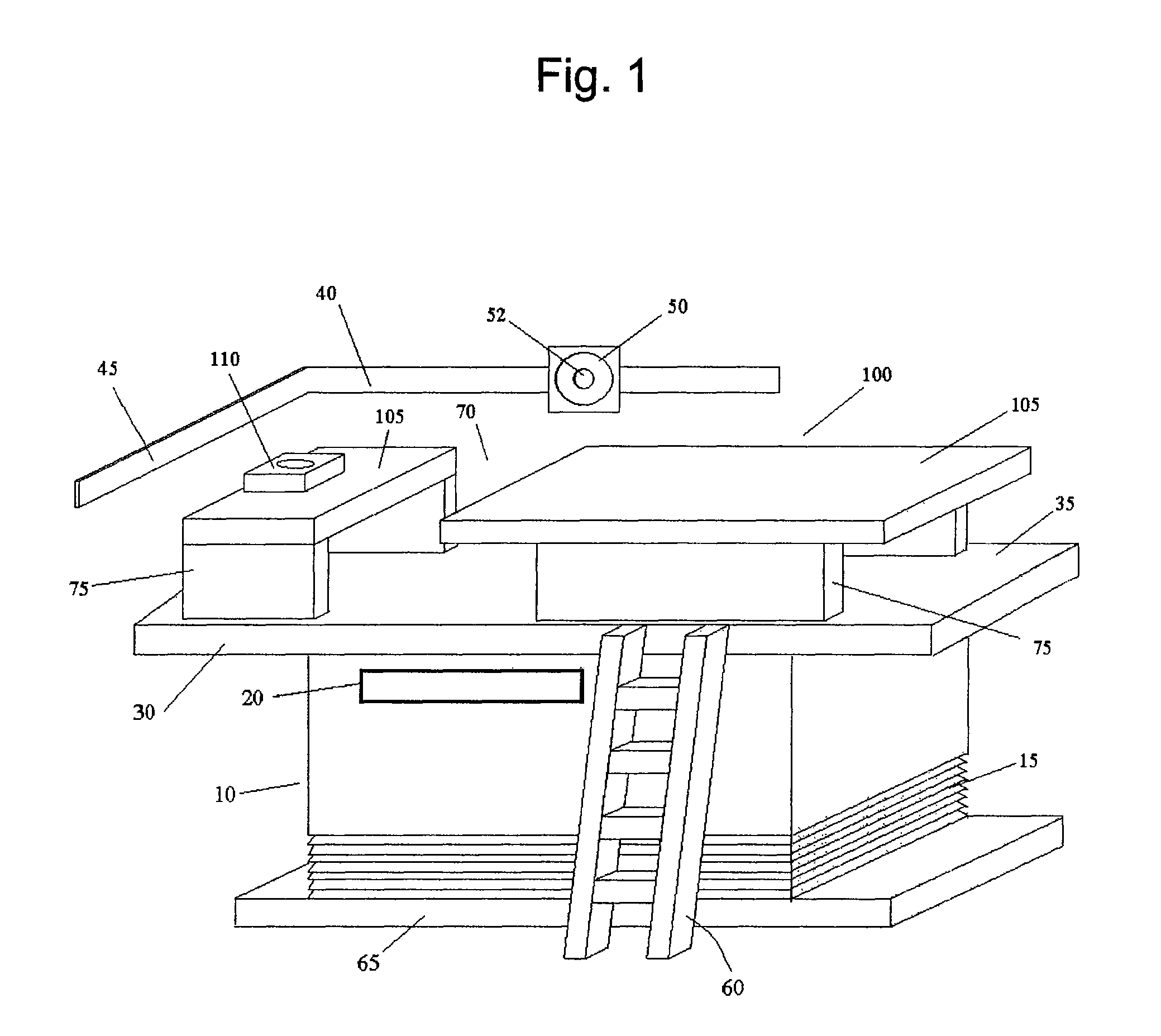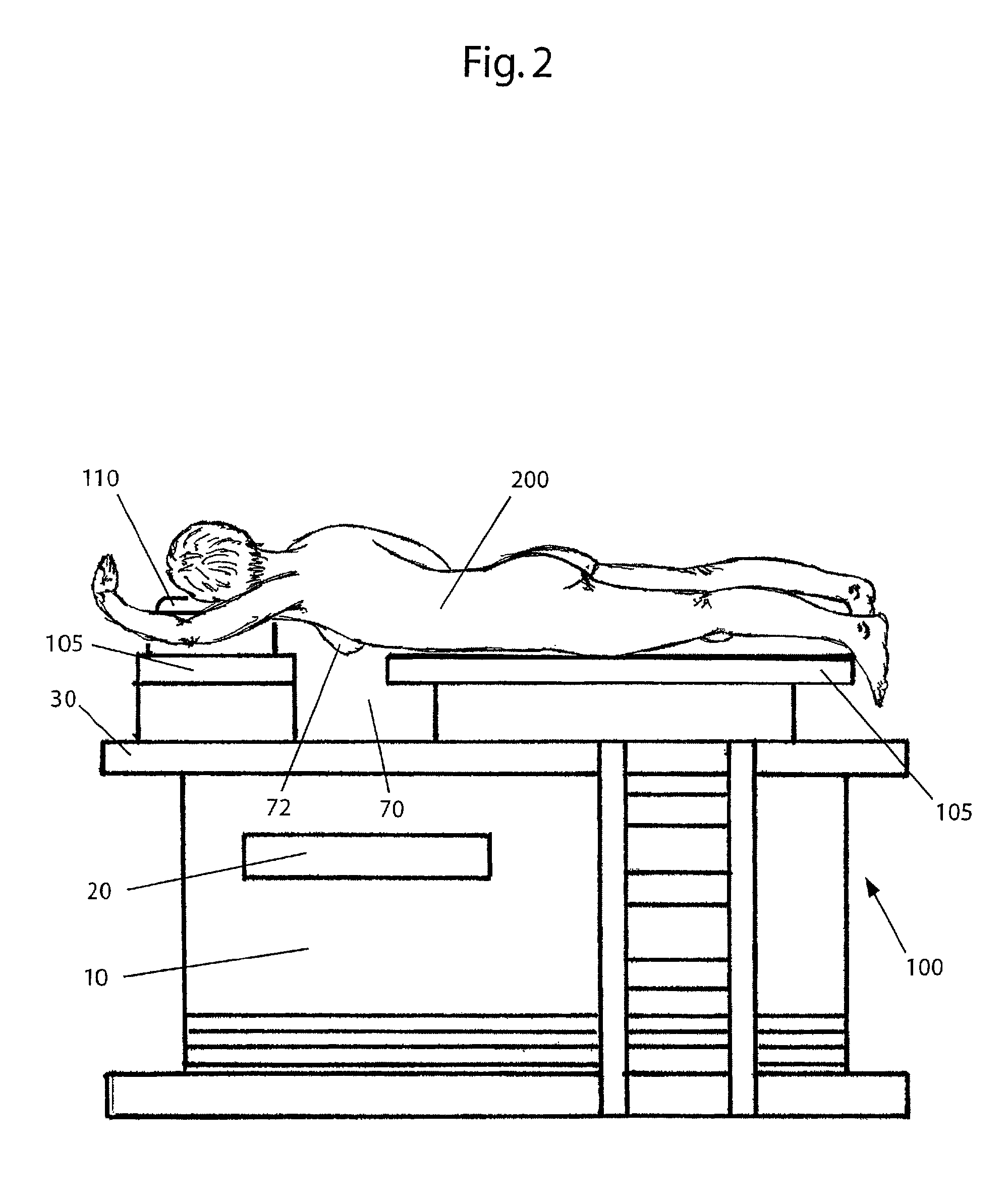Radiation treatment table and method for prone breast radiation treatment
a radiation treatment and breast technology, applied in the direction of diagnostics, patient positioning, therapy, etc., can solve the problems of increased toxicities, poor cosmetic outcomes, and increased irradiation to surrounding areas such as the lungs and hear
- Summary
- Abstract
- Description
- Claims
- Application Information
AI Technical Summary
Benefits of technology
Problems solved by technology
Method used
Image
Examples
Embodiment Construction
[0039]By way of overview and introduction, the method and radiation treatment table for prone patient positioning according to the present invention can be used with conventional linear accelerator machines and radiation accelerator tables. As shown in FIGS. 1 and 2, the treatment table 100 is placed upon a conventional accelerator table (shown generally as 10). Conventional accelerator tables have a top surface 35 with dimensions typically on the order of 2 meters.
[0040]Preferably, the treatment table 100 of the present invention is securely positioned upon and supported by the accelerator table 10. The treatment table 100 may be attached to the top surface 35 or one of the side surfaces of the accelerator table 10. The treatment table 100 is preferably attached to the top surface 35 by one of a variety of ways, as discussed in more detail below. The treatment table 100 is constructed of suitable materials such that it will not interfere with the radiation and other imaging modalit...
PUM
 Login to View More
Login to View More Abstract
Description
Claims
Application Information
 Login to View More
Login to View More - R&D
- Intellectual Property
- Life Sciences
- Materials
- Tech Scout
- Unparalleled Data Quality
- Higher Quality Content
- 60% Fewer Hallucinations
Browse by: Latest US Patents, China's latest patents, Technical Efficacy Thesaurus, Application Domain, Technology Topic, Popular Technical Reports.
© 2025 PatSnap. All rights reserved.Legal|Privacy policy|Modern Slavery Act Transparency Statement|Sitemap|About US| Contact US: help@patsnap.com



